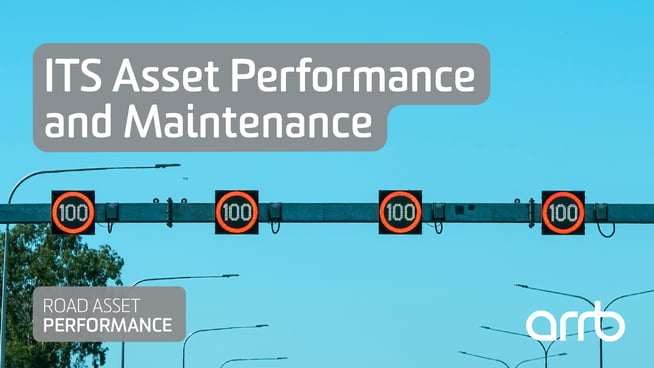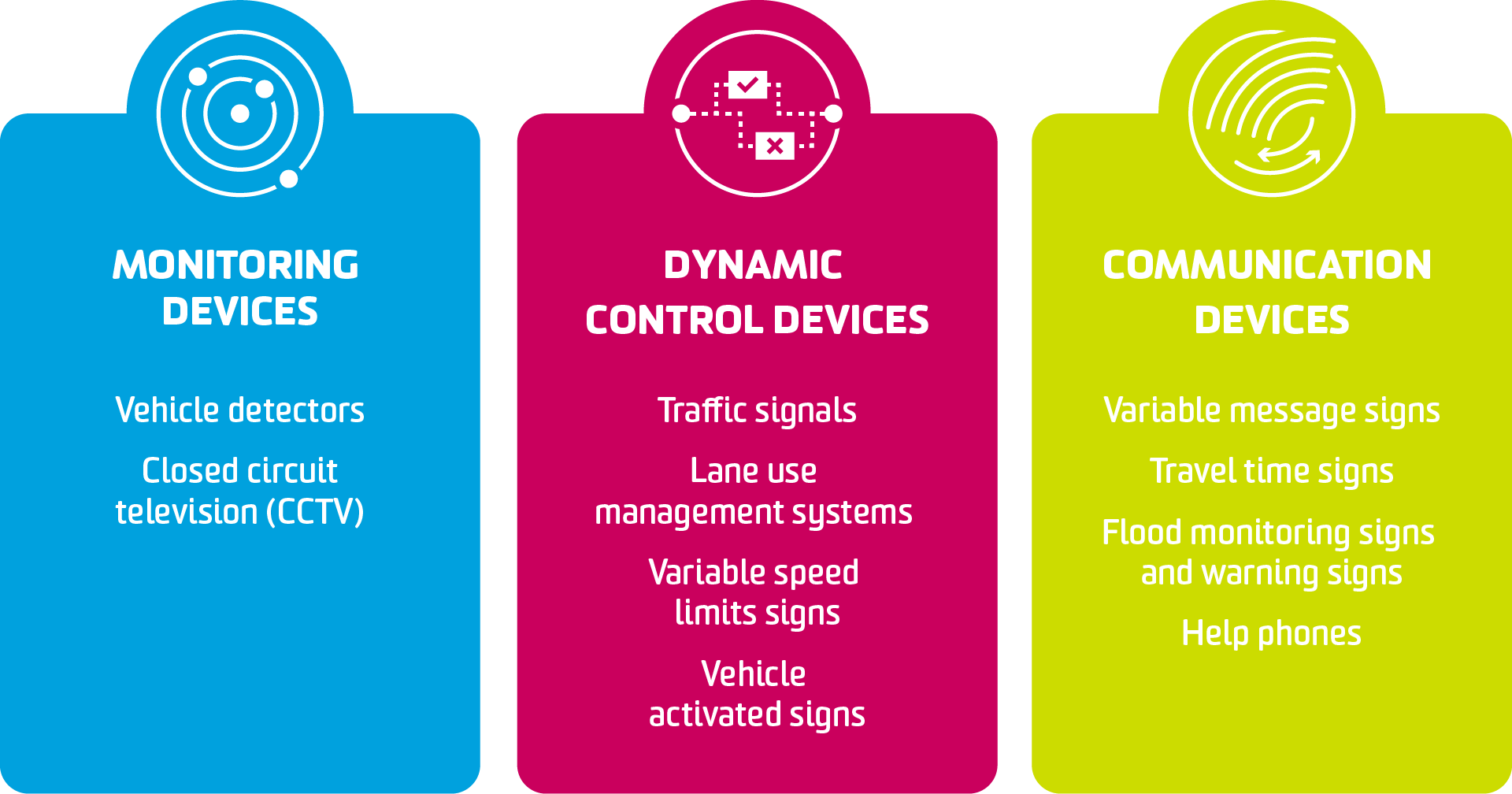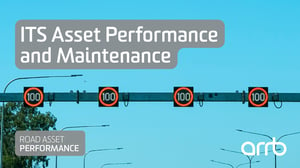Road network asset performance and maintenance is not limited to the road pavement, road substructure and roadside verges. It also extends to intelligent transport systems (ITS) which are used to monitor road network performance, control road network operations and to communicate information to road users. The Australian Road Research Board’s (ARRB's) Mobility Futures team has been advising stakeholders on the considerations related to this.

Outlined below is a high-level overview of some of the key considerations when it comes to ITS asset performance and maintenance.
ITS assets
The function of ITS assets that are deployed on the road network can be wide ranging. They range from a monitoring, control, and communication function. Examples of ITS devices deployed on the road network include, but are not limited to, the following:

Need to maintain ITS assets
Given the ITS assets’ role in monitoring, controlling, and communicating information to road users, it is critically important to maintain the effective operation of ITS assets to enable safe, productive, and efficient operations of the road network.
With road pavements, road substructures and roadside verges, failure can occur over time and thus needs to be monitored. ITS assets on the other hand can fail suddenly. This can put road managers in a difficult situation. Do they wait for the failure and undertake reactive maintenance, or do they undertake proactive maintenance?
Reactive versus proactive maintenance
Reactive maintenance may potentially incur fewer maintenance costs. However, in some situations, it can mean that economic costs associated with the ITS device not working may be more than any financial cost savings due to the reduced maintenance task. The economic costs associated with the ITS device not working could be associated with safety, productivity, driver expectations and reputation. Some examples include:

The downtime of critical ITS devices and the costs associated with the downtime can be exacerbated by factors such as:
- Availability of ITS devices
- Availability of parts
- Availability of qualified personnel to undertake the rectification works
- Ability to get to locations where the ITS devices are located in a remote location (e.g. flood monitoring sign)
- Scheduling works cognisant of impact to traffic (e.g. traffic management required to undertake the works).
To minimise the costs associated with the downtime of a critical ITS, road managers can undertake proactive maintenance. In doing so, they can avoid the need to wait for the ITS device to fail before undertaking reactive maintenance.
Strategies
There are various strategies that road managers can deploy to help them maintain ITS asset performance through undertaking ITS asset maintenance.
Currently (as of 2021), ARRB undertook a review of road operation intervention levels for the Queensland Department of Transport and Main Roads (TMR) as part of the National Asset Centre of Excellence (NACOE) agreement between ARRB and TMR. The review identified various strategies with respect to ITS asset performance and monitoring. These can include:
- Review, refine and/or develop investment policies and principles associated with ITS asset performance and maintenance. This can define how proactive maintenance activities should be undertaken for the various ITS assets deployed on the road network. This can be based on the likelihood and consequence of ITS failure.
- Review, refine and/or develop investment prioritisation associated with ITS asset performance and maintenance. This can include better articulating what can be afforded and what is really needed.
- Collect data associated with ITS asset performance and maintenance so that it can shape policies, principles, and prioritisation.
- Review, refine and develop functional requirements for ITS assets. This is to achieve consistency in ITS asset functional requirements.
- Develop performance benchmarking and intervention levels. Establishing performance benchmarking and intervention levels should take into consideration proactive and reactive delivery of work activities.
- Undertake ongoing reviews. This will review, refine, and shape the aspects listed above.
In 2016, ARRB prepared Austroads report AP-R36-16 titled ‘Reliability-centred Maintenance Strategy and Framework for Management of Intelligent Transport System Assets’. This provides:
- Identification of key success factors
- Confirmation of the benefits and acceptability of RCM within Austroads jurisdictions including their contractors and suppliers
- Design of an RCM process template
- Drafting of a road map for moving from the current practice to RCM.
Connected and automated vehicles
This article has focused on ITS asset performance and maintenance. It is also worth mentioning that ITS in the form of emerging connected and automated vehicles (CAV) can potentially help with traditional road surface asset performance and maintenance.
A key part of road surface asset performance and maintenance is the identification of the degradation of the road surface. CAVs with the sensors required to read the road and the ability to communicate information has the potential to be used to collect information about the road network and communicate the information related to the road surface and roadside back to road managers via the cloud. This can be fed back to road managers’ asset management strategies, enabling improved road asset performance and maintenance.
Contact us
We hope you found this article interesting and thought-provoking. If you would like further information with respect to ITS asset performance and monitoring and/or how connected and automated vehicles can potentially help with traditional road surface asset performance and maintenance, please contact ARRB. ARRB’s Mobility Futures group will be more than happy to assist. Please contact us at info@arrb.com.au to discuss further.
